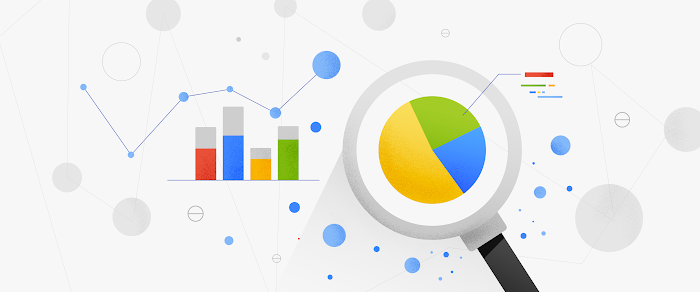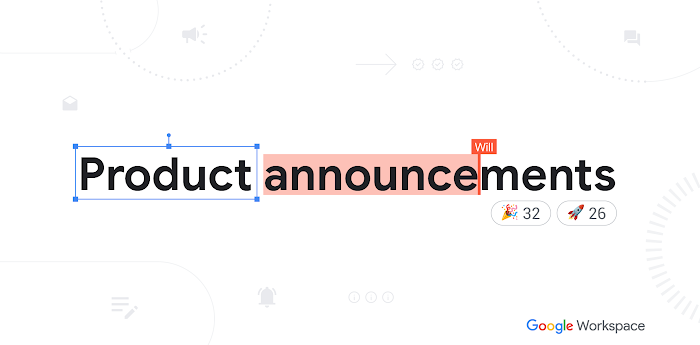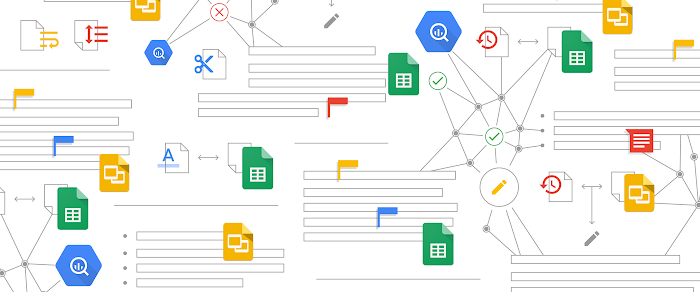Work hacks from G Suite: getting insights from day-to-day data
Daniel Gundrum
Product Manager, G Suite
Try Google Workspace at No Cost
Get a business email, all the storage you need, video conferencing, and more.
SIGN UPIn order to make smarter business decisions, you need access to the right data and insights to support recommendations. But with siloed business reporting across organizational units and multiple analytics tools housing your data, getting insights isn't always easy. That’s where G Suite can help, specifically Google Sheets.
For the most part, data has to undergo four steps before it can become useful to your organization. Below, we’ll walk you through each of these phases, and share how we’ve built features in Sheets to support you each step of the way.
1. Collecting data.
To get started, it’s first necessary to gather all data that can impact your decision. This is arguably the most taxing part of data analysis because it often requires manually importing data from other tools or fussing with file formats (not to mention tracking down information internally).
Sheets has built-in mechanisms to help you import data from inside your company quickly, as well as from third-party sources. For example, you can sync data from one spreadsheet to another or import data from tools like BigQuery to create a master database in Sheets. In addition, if you want to export data from Sheets to third-party sources, you can use add-ons, like the data connector for Salesforce, to create a single source of truth within Salesforce.
Whatever the method, the trick is to get all relevant information into one location before you begin analysis. Check out this article or this one to learn more about importing into Sheets.
2. Preparing data.
After you’ve collected the raw data, the next step is to sift through and organize it to be more useful. Here’s some quick advice to help you spruce up your spreadsheet before you begin analysis.
- Establish key categorization for your spreadsheet. For example, Sheets can help you quickly split raw data into columns or rows if it’s separated by commas, or even get rid of columns you don’t need. If you’re more savvy with spreadsheets, try using VLOOKUP to join two datasets together (if they share a common value).
- Remove duplicate data. Sheets can automatically help you remove rows with repeat data or remove extra spaces. If you want to speed this process up further, you can record macros to repeat steps like this for you.
- Organize your columns and rows by adding checkboxes (Insert > Checkbox), drop-down arrows, images into specific cells and more.
However you want to splice your data, Sheets’ user interface is intuitive and can help you do it quickly.
3. Analyzing and visualizing data.
Some of our work requires complicated data analysis. For that, you should call on the experts: data scientists. But for decisions that have incremental (but important) impact on your business’ bottom line, insights are important there, too. Workers need tools that can help them analyze—and explain—what day-to-day data means.
Sheets can help you do this quickly. Choose from more than 400 formulas to crunch your numbers, create pivot tables to understand your data or choose from more than a dozen chart types to help bring your data to life visually. With the help of machine learning, Sheets can even auto-create pivot tables for you and suggest charts for analysis.
4. Sharing insights.
What good is finding insights, if you can’t easily share that information with colleagues or keep it up to date?
We’ve built G Suite applications to encourage sharing by default. For example, you can:
Co-edit spreadsheets with colleagues to speed up document creation.
Comment and assign tasks to make your data actionable and teams accountable.
Monitor changes made to your data (even changes within individual cells) by using Version History.
And when you’re ready to share your findings, refresh data embedded in Slides from Sheets with a click, rather than time-consuming, manual updates.
Fast insights, faster decisions
Everyone should be able to make sense of data quickly, whether or not they’re a data scientist. Sheets is designed to help you do it with ease. To learn more, check out this Cloud Next '19 session, or test your skills further in this Qwiklab course.



